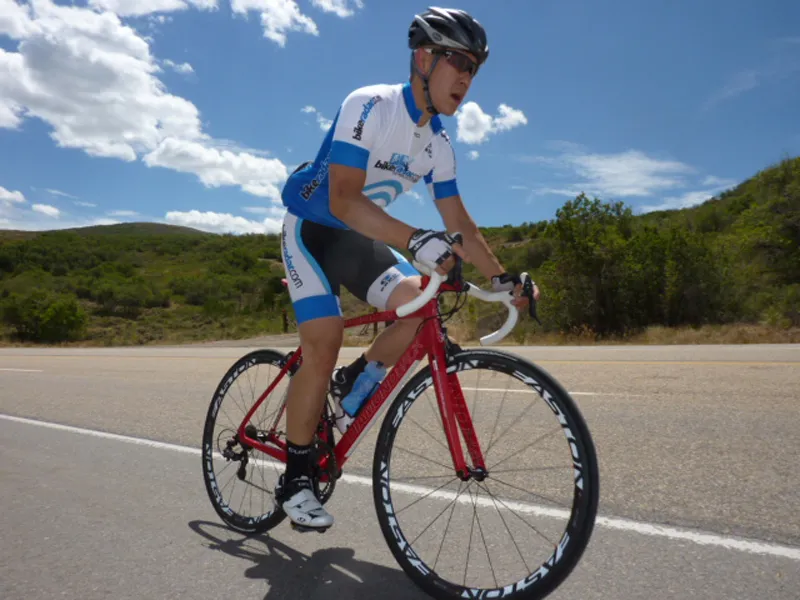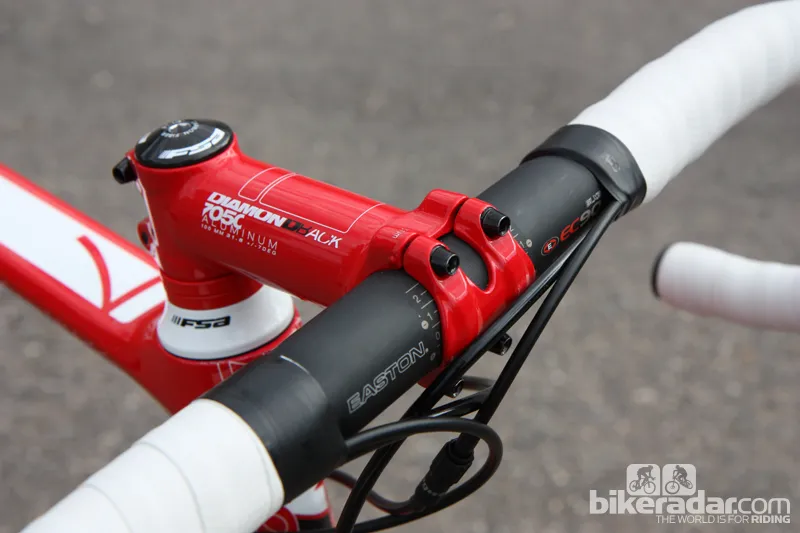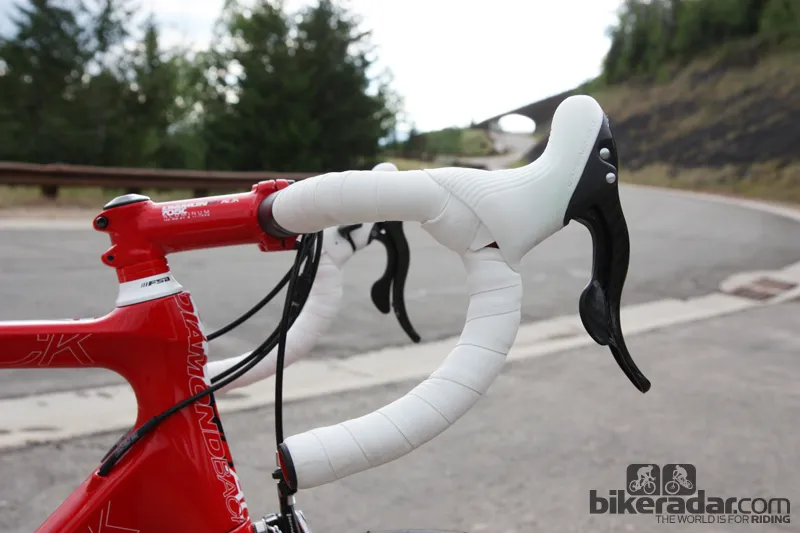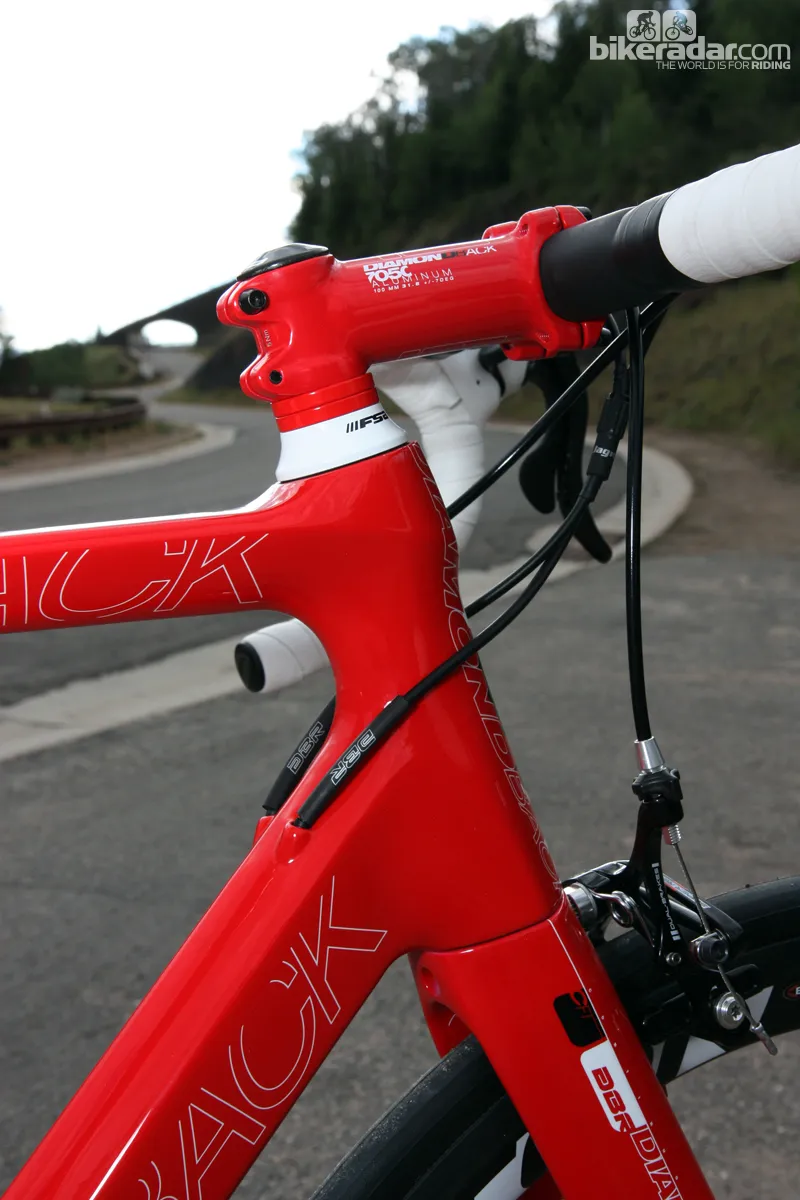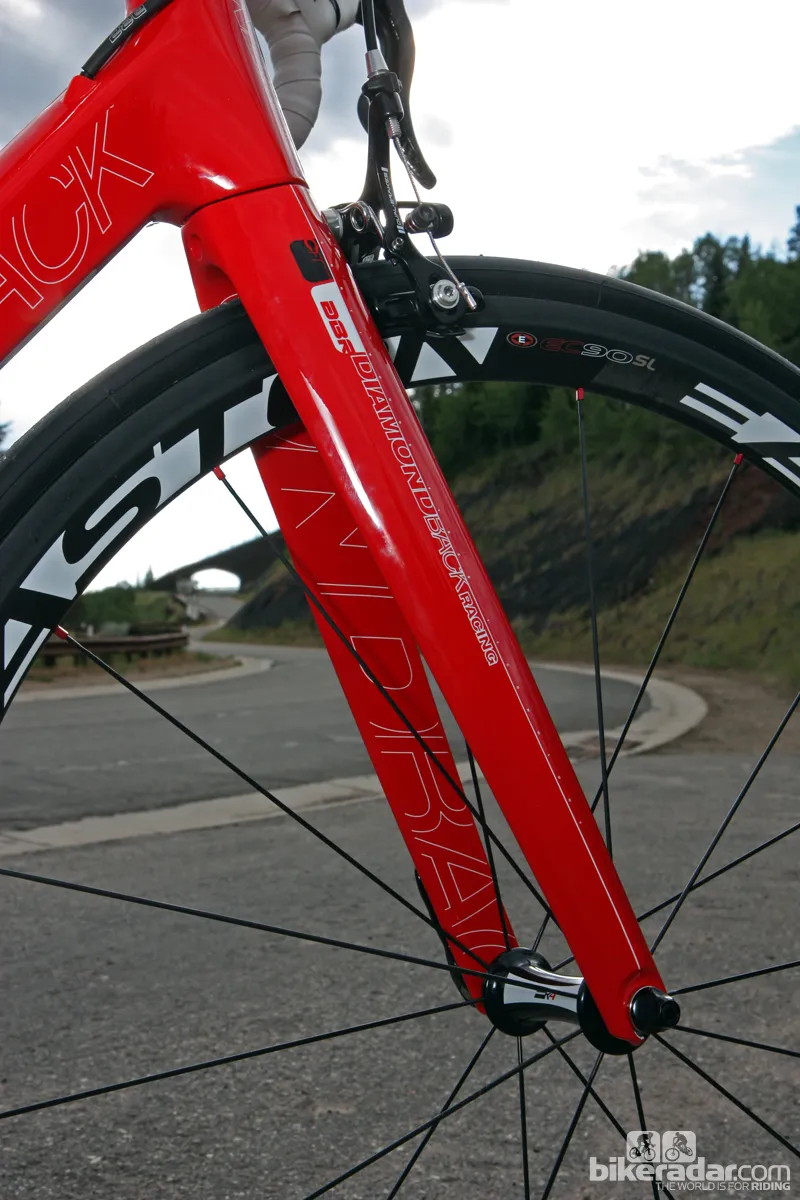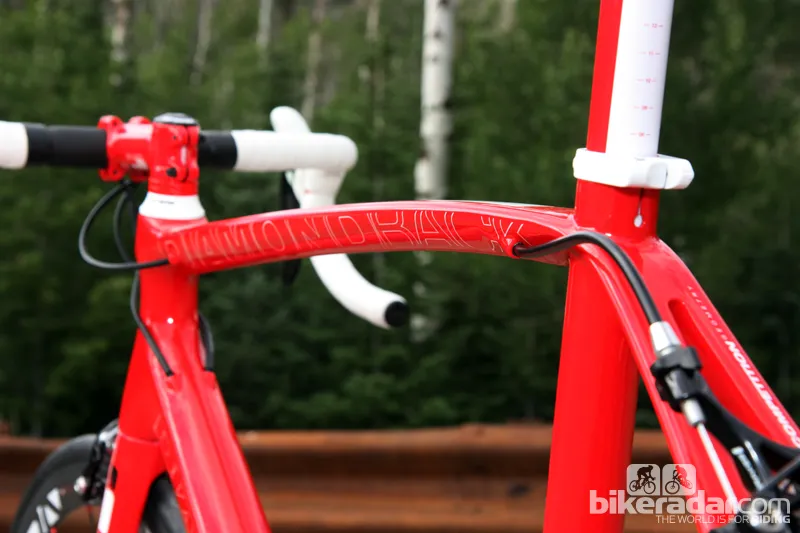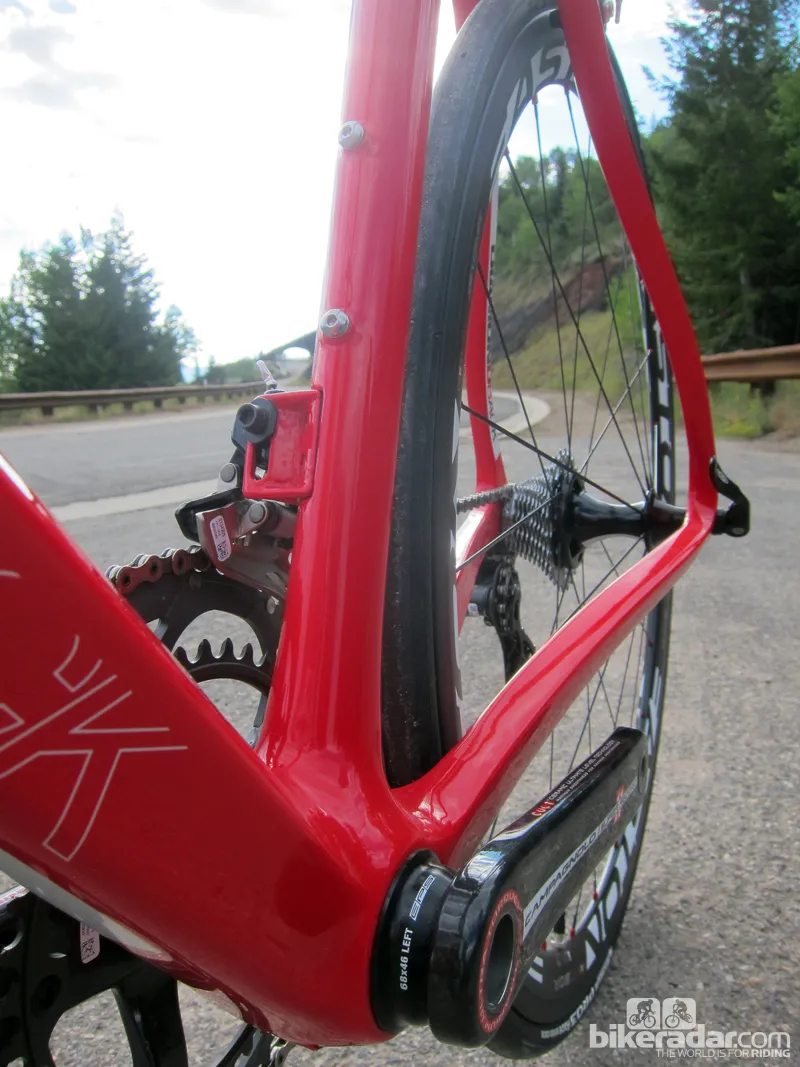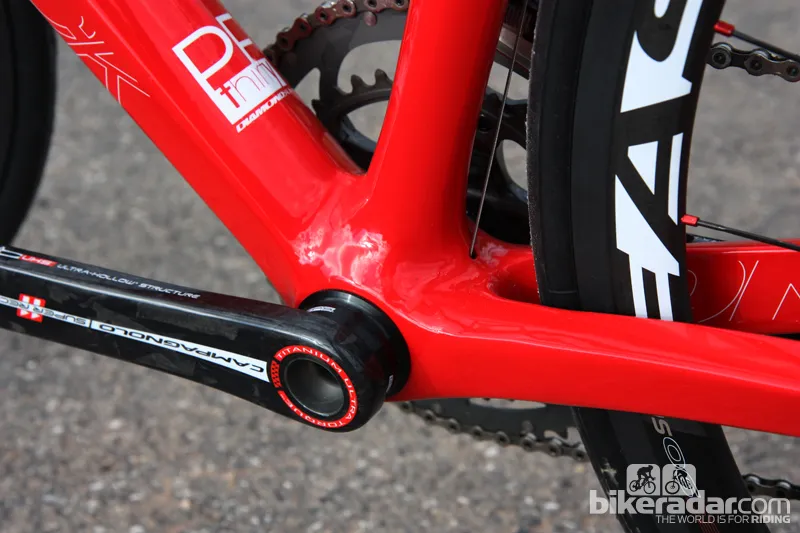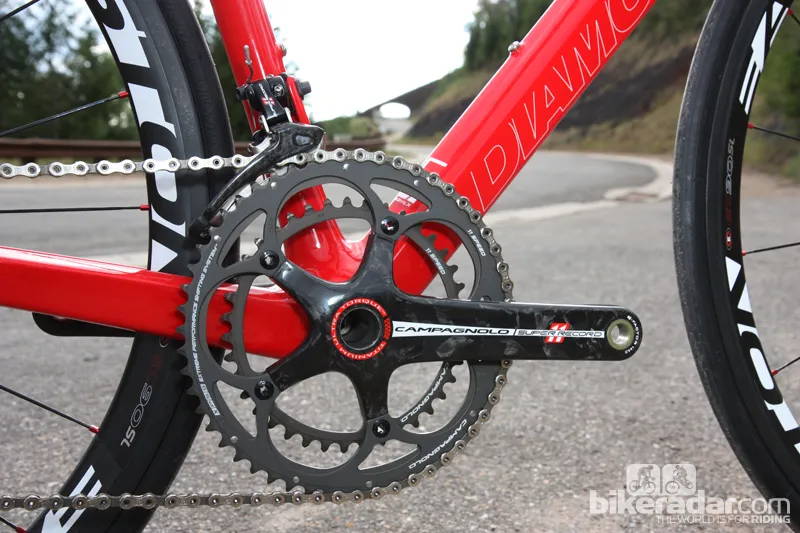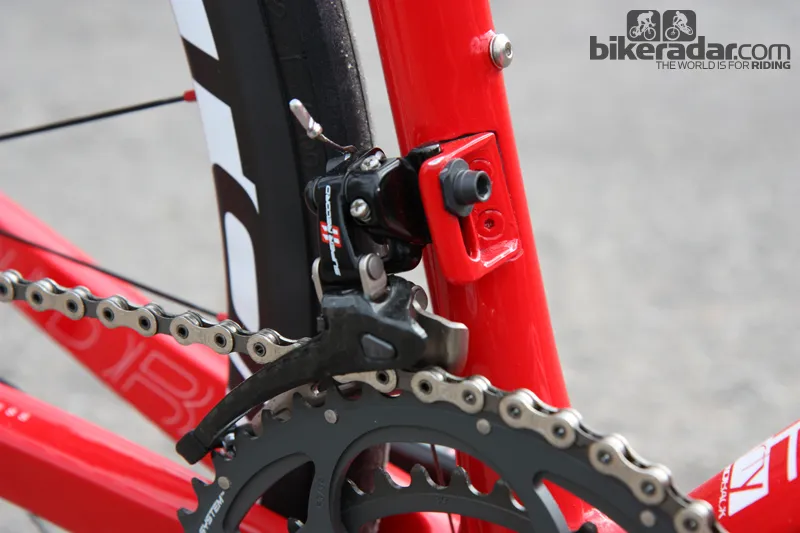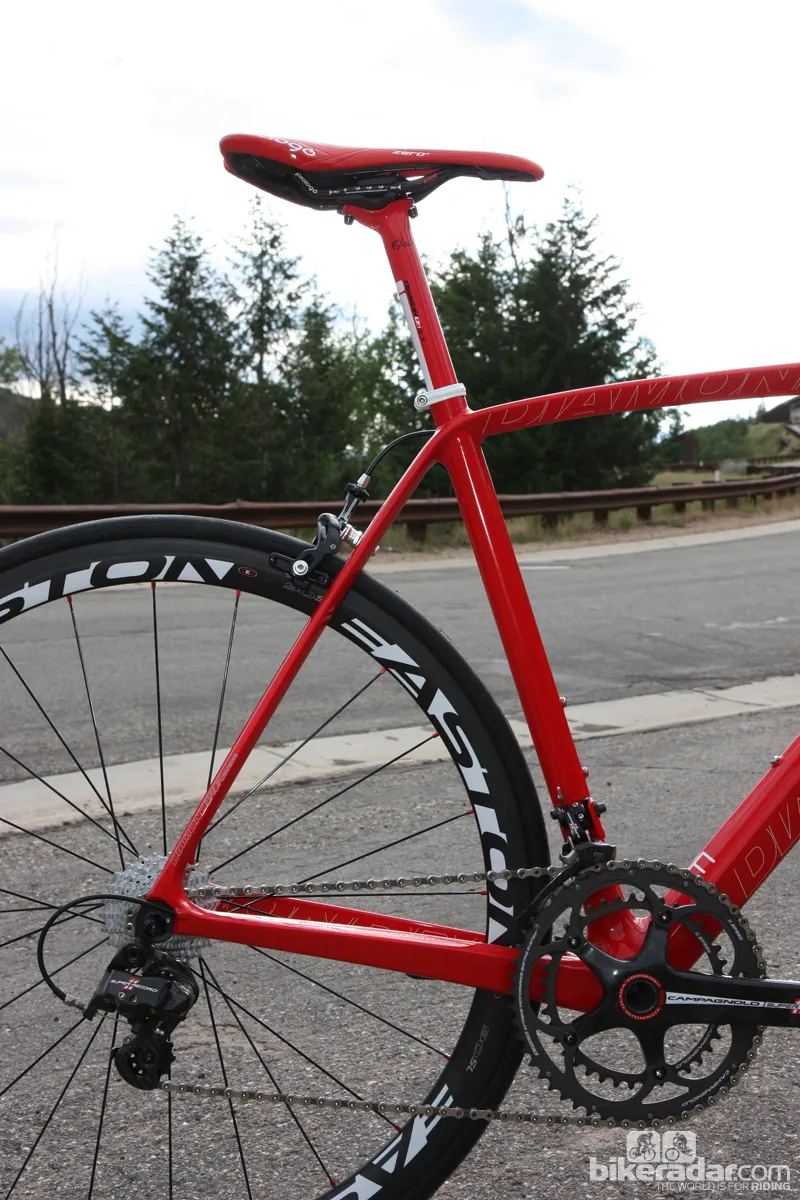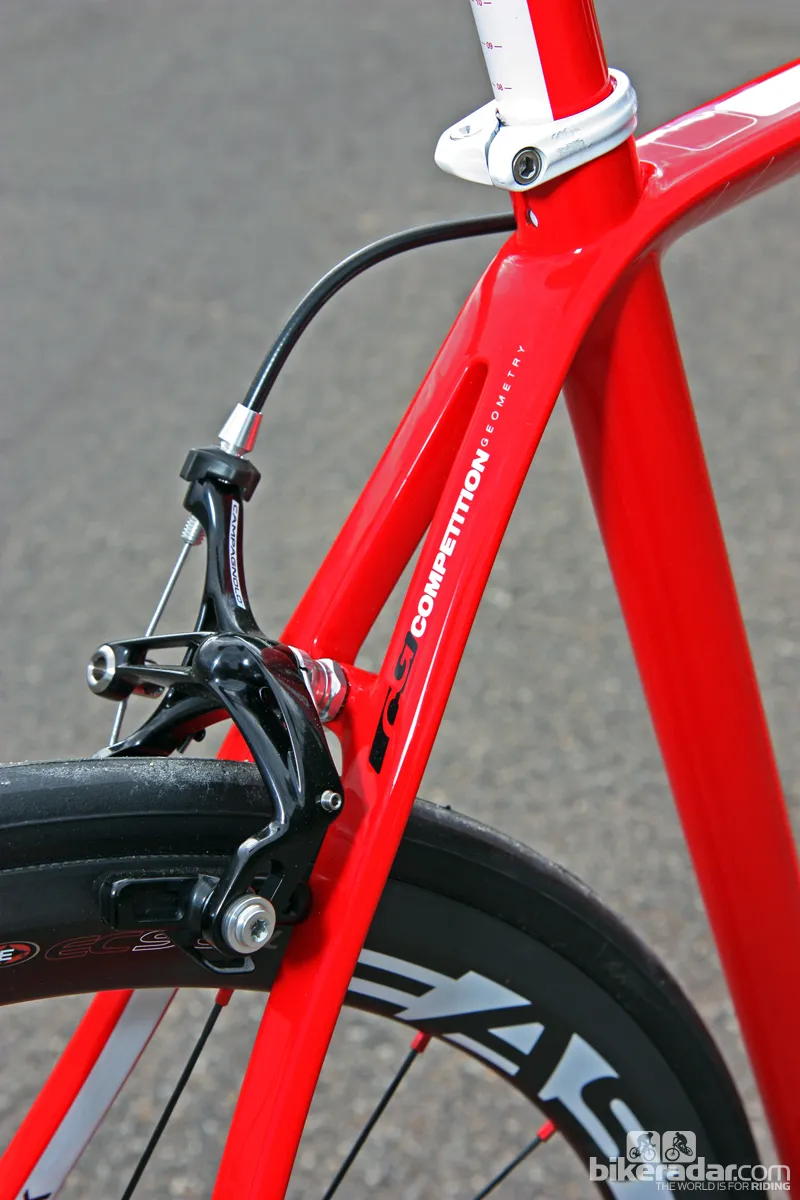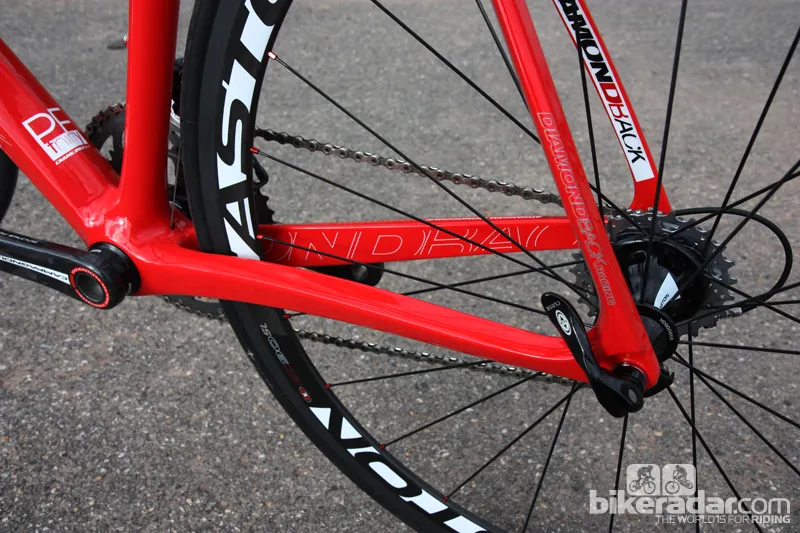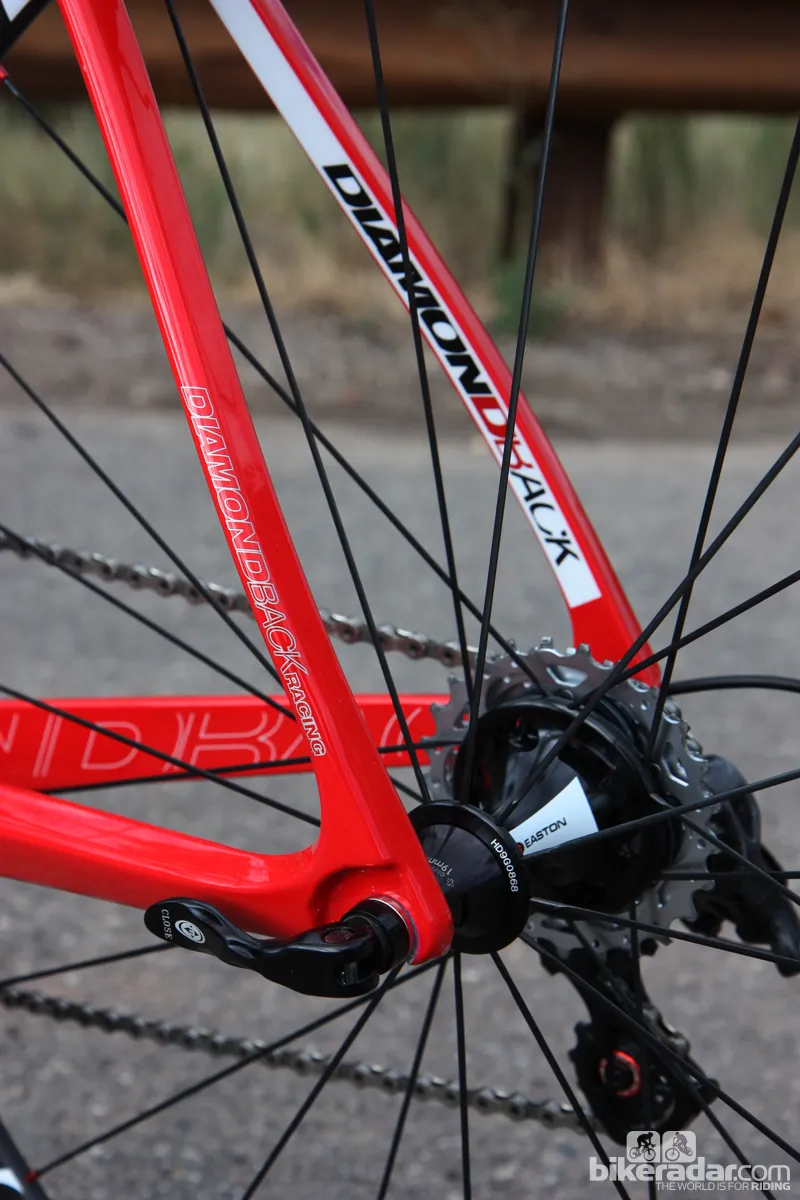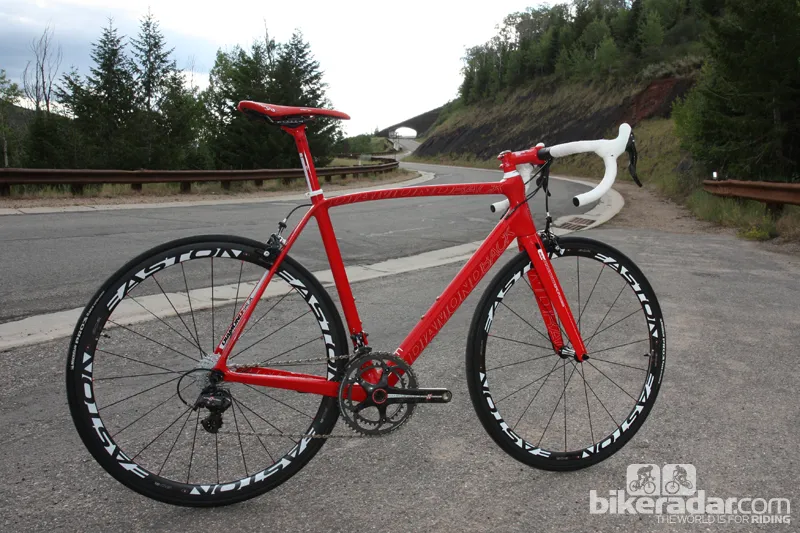Diamondback only does mountain bikes, right? Not so fast. The flagship Podium 7 Super Record road bike offers an outstanding ride quality, very good stiffness, and a fantastic spec for an impressively reasonable price tag. It seems the veteran marque still remembers how to tackle the pavement after a long hiatus from the segment.
Ride and handling: springy and quick with lots of life
We noticed the Podium 7's lively ride quality more than anything else. The large-diameter, thin-walled tubes lend a delightfully springy feel with lots of pop under power, and there's excellent feedback of road texture but without any harshness. Miles tick off quickly and comfortably.
Power transfer is very good through the rigid rear end, but particularly strong riders might find that the front triangle could be stiffer. While that 'springiness' we noted is undoubtedly pleasing and lends a lot of personality to the ride, we still noted a bit of twist to the front end when muscling out of the saddle for sprints and steeper climbs.
It's not nearly enough to negatively affect the handling, though. If anything, that slight give only adds to the bike's confident feel in corners as the tires are better able to stick to the pavement than on a more unyieldingly rigid chassis. Diamondback's promise of classic stage race handling is mostly fulfilled, although we'd say that it still falls just slightly to the quicker end of that fine line with its short 405mm chain stays and nimble 975mm-long wheelbase on our 54cm tester.
Unable to load media
Video: Diamondback Podium series intro (courtesy: Diamondback)
While turn-in is quick, the Podium 7 is still a stable chassis, provided you're not sloppy with bar inputs. We topped 70km/h several times during our ride in a full-blown tuck on a busy highway shoulder with no shimmy or nervousness.
We also have a few lingering questions on the rider positioning that we'll have to sort out later on a long-term tester. In particular, the head tube length strikes us as rather long for a true race bike. Our 54cm measured 150mm, plus a 20mm headset cone – the same as Trek's H2 'endurance fit' layout.
We'd also like to see standard stem lengths increased by 10mm or so across the board – ours came with a conservative 100mm size – to provide a more appropriately stretched-out posture.
As far as aesthetics go, buyers interested in the top-end Podium 7 had better like red. In addition to the frame and fork being covered in the bold hue, Diamondback also included a matching seatpost, stem and Prologo Zero saddle, all of which are offset with white accents.
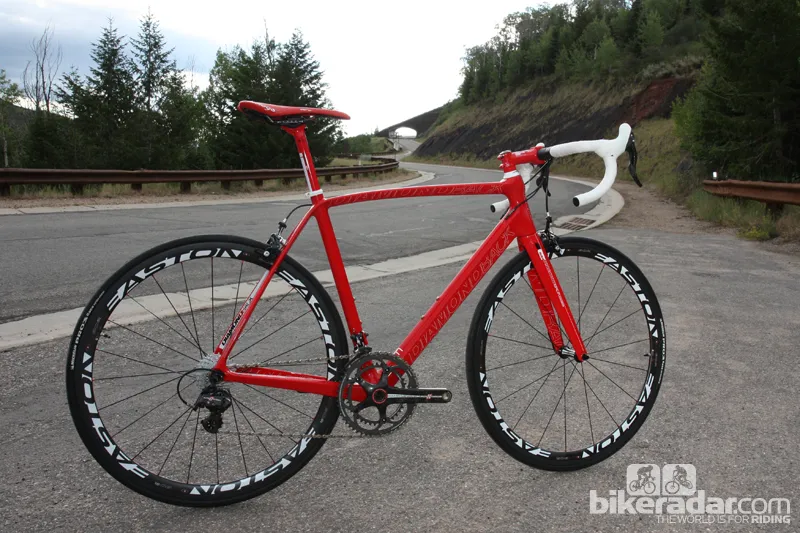
What is black, white and red all over?
Frame: modern technologies and clean lines
Diamondback may be new to the carbon road bike game, but the Podium 7 frame wouldn’t give that away. The slightly sloping geometry, multi-sized tubes, and flowing lines look thoroughly modern, and the company seems to have done its homework, integrating worthwhile cues from the competition. Engineering and design consultant Kevin Quon has a long history in the field with past work that includes Cervélo and NeilPryde among others.
Among the laundry list of features is a 1 1/8-to-1 1/2in tapered head tube with molded-in bearing seats for the integrated headset; a wide, flat, and subtly bowed top tube; relatively tall and slightly asymmetrical chain stays paired with very small and slightly flattened seat stays; carbon fittings including the PressFit 30 bottom bracket sleeve, rear dropouts, and fork tips; continuous fiber paths on the all-carbon fork with a molded-in lower bearing race; internal molds at the head tube and bottom bracket areas for better fiber compaction and a more refined internal finish; and internal cable routing that is specific to either mechanical or electronic transmissions.
Diamondback wisely opted for a traditional 27.2mm round seatpost for comfort and convenience. While the front derailleur mount is lightweight molded carbon fiber, it's also easily replaceable.
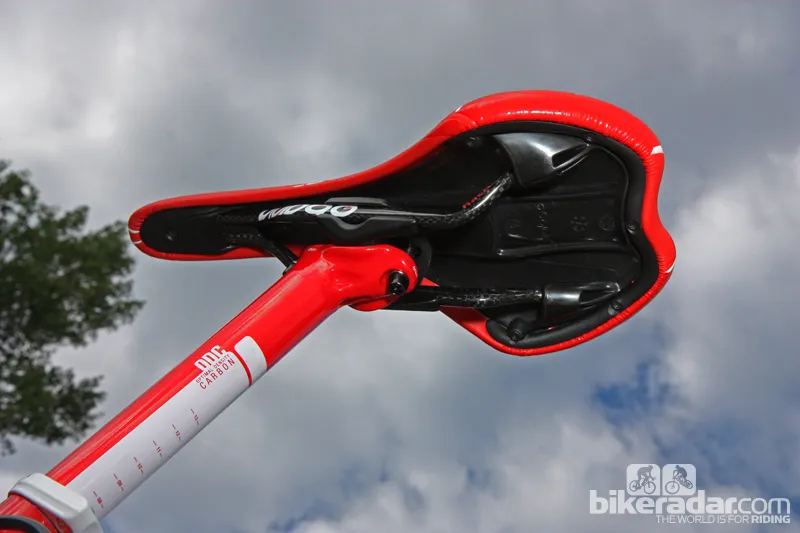
A Prologo saddle sits on a 27.2 post
The internal cable routing could be improved, especially for the rear brake. Entry and exit points are both on the lower, left-hand side of the top tube, meaning the cable has to take a curved path that produces noticeably more friction than a straighter setup. In addition, our test bike has an incessant rattle over rougher sections of pavement.
We'd suggest that Diamondback move the exit point atop the top tube to give the cable a more direct route through the curved tube, which would also give a better path to the rear brake caliper.
We'll have to wait for a production sample to verify the claimed sub-900g frame weight, particularly since we measured a newly delivered 50cm frame for a member of the Allegiant Air cycling team at a substantially heavier 1,130g. Granted, that bike was covered in lots of thick, white paint (white finishes require the most material for coverage and paint is much heavier than people expect in case you were wondering) but it still seemed surprisingly hefty. Fork weight was spot on at 360g as claimed.
Equipment: Awesome Super Record group but braking could be better
Thankfully those descents weren't finished off with a harrowing corner at the bottom as braking quality was only so-so with the stock carbon-specific Campagnolo pads and Easton EC90 SL rim surface. Initial bite was lacking for sure. While the modulation was excellent, there simply wasn't enough power in dry conditions, and there would be even less in the wet.
In fairness, Easton recommends using SwissStop Yellow King pads and we've had better luck with that combination in the past. Campagnolo's dual-pivot rear caliper might help a bit, too, but in our opinion it was mostly a pad-rim surface interface issue.
Otherwise, the Campagnolo Super Record group was flawless, with accurate and precise shifting front and rear, a silky-smooth drivetrain, and comfortable hoods that provide multiple useful positions. The shift levers also provided heaps of tactile feedback, which pairs well with the frame's highly communicative personality.
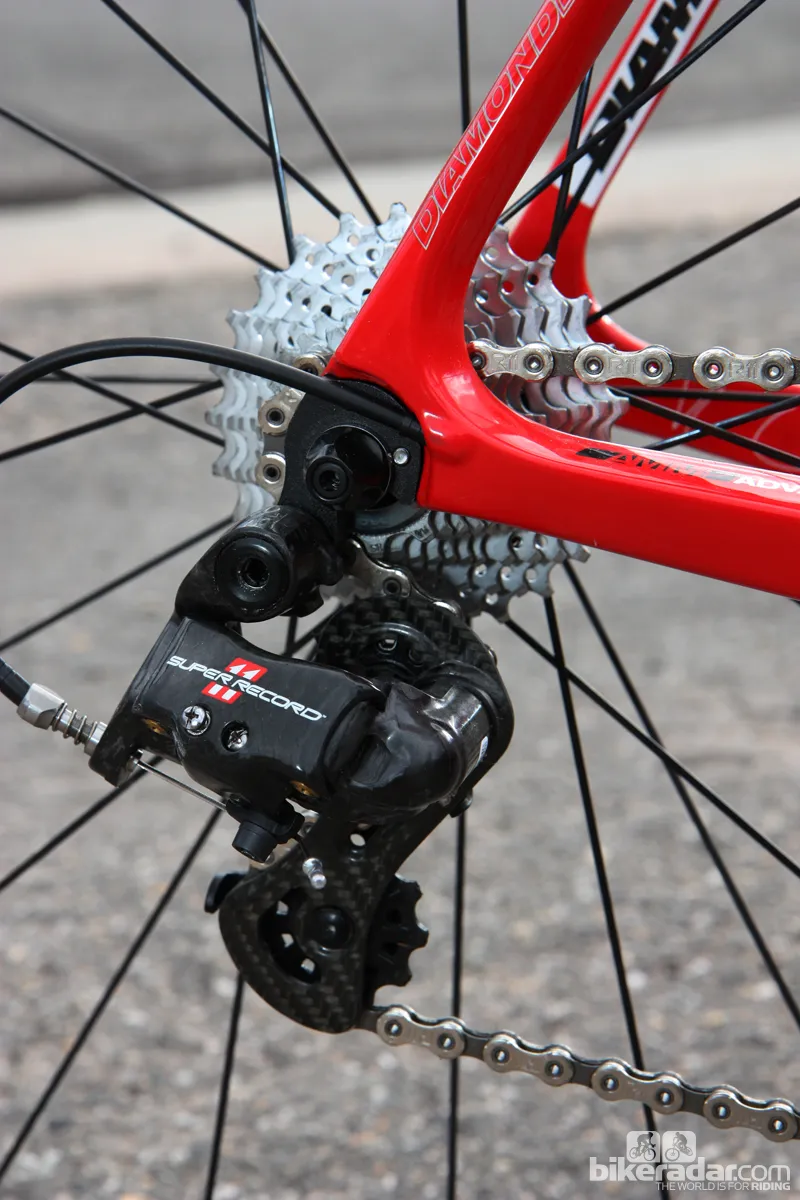
The 11-speed Super Record group shifts flawlessly
Aside from the brake pad issue, we also had a very positive initial experience with the Easton EC90 SL carbon clincher wheels, which hold speed well and feel light when accelerating.
We had no complaints with the ancillary bits, either. Riders accustomed to flat-profile saddles will find much to like in the Prologo Zero with its firm shell and highly supportive foam padding and the Easton EC90 SLX3 carbon bar offered a comfortable and versatile bend plus a little give on the bumps to supplement the frame.
We'll refrain from making final judgments until we've had an opportunity to put time in on a long-term bike on familiar roads but overall, first impressions are very favorable. While we've certainly ridden bikes that were stiffer or lighter, few have matched the Podium 7's enviable ride quality. Add in the solid spec and reasonable pricing and it's absolutely an enticing package.
